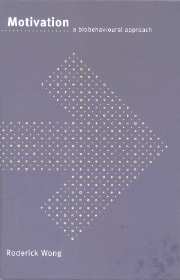Book contents
- Frontmatter
- Contents
- Preface and acknowledgements
- 1 Introduction and perspective
- 2 Mating and reproductive activities
- 3 Parental/maternal activities
- 4 Feeding activities
- 5 Food selection
- 6 Drinking activities
- 7 Stimulus seeking and exploratory activities
- 8 Aversive motivation systems: fear, frustration and aggression
- 9 Social motivation: attachment and altruism
- 10 Conclusions and retrospective
- References
- Author index
- Subject index
10 - Conclusions and retrospective
Published online by Cambridge University Press: 10 December 2009
- Frontmatter
- Contents
- Preface and acknowledgements
- 1 Introduction and perspective
- 2 Mating and reproductive activities
- 3 Parental/maternal activities
- 4 Feeding activities
- 5 Food selection
- 6 Drinking activities
- 7 Stimulus seeking and exploratory activities
- 8 Aversive motivation systems: fear, frustration and aggression
- 9 Social motivation: attachment and altruism
- 10 Conclusions and retrospective
- References
- Author index
- Subject index
Summary
MOTIVATION AND FITNESS
I trust that, after studying the material presented up to this point, the reader has a fair idea about the various factors underlying such motivated behavioural activities as mating, parental care, feeding, food selection, drinking, stimulus seeking and defensive or agonistic reactions. The material in the preceding chapters indicate that although the response patterns may differ, these motivated acts have one important feature in common. They are terminated when an end-point corresponding to a goal is achieved. The concept of fitness was discussed in the early part of this book with the presumption that organisms have evolved in such a way to maximise fitness. I discussed how evolutionary processes may have selected mechanisms that result in a particular behaviour. From this perspective, the functional significance of any aspect of behaviour is seen in terms of fitness maximisation or the chances it gives to the perpetuation of the organism's genes. The functional significance of mating behaviour is obvious, even though it may not directly enhance the survival of the individual. Although a motivated act such as feeding contributes directly to the survival chances of the individual, it does so through its contribution to the chances of gene perpetuation. The traditional distinction made between activities such as feeding, drinking or attacking and activities concerned with gene perpetuation such as sexual behaviour is unwarranted. All behaviour has been affected by evolutionary processes with consequences on fitness.
In discussing sexual selection, I presented material indicating that sexual dimorphism and sexual behaviour may decrease an individual's survival even though such attributes increase the chance of gene perpetuation.
- Type
- Chapter
- Information
- MotivationA Biobehavioural Approach, pp. 221 - 232Publisher: Cambridge University PressPrint publication year: 2000



